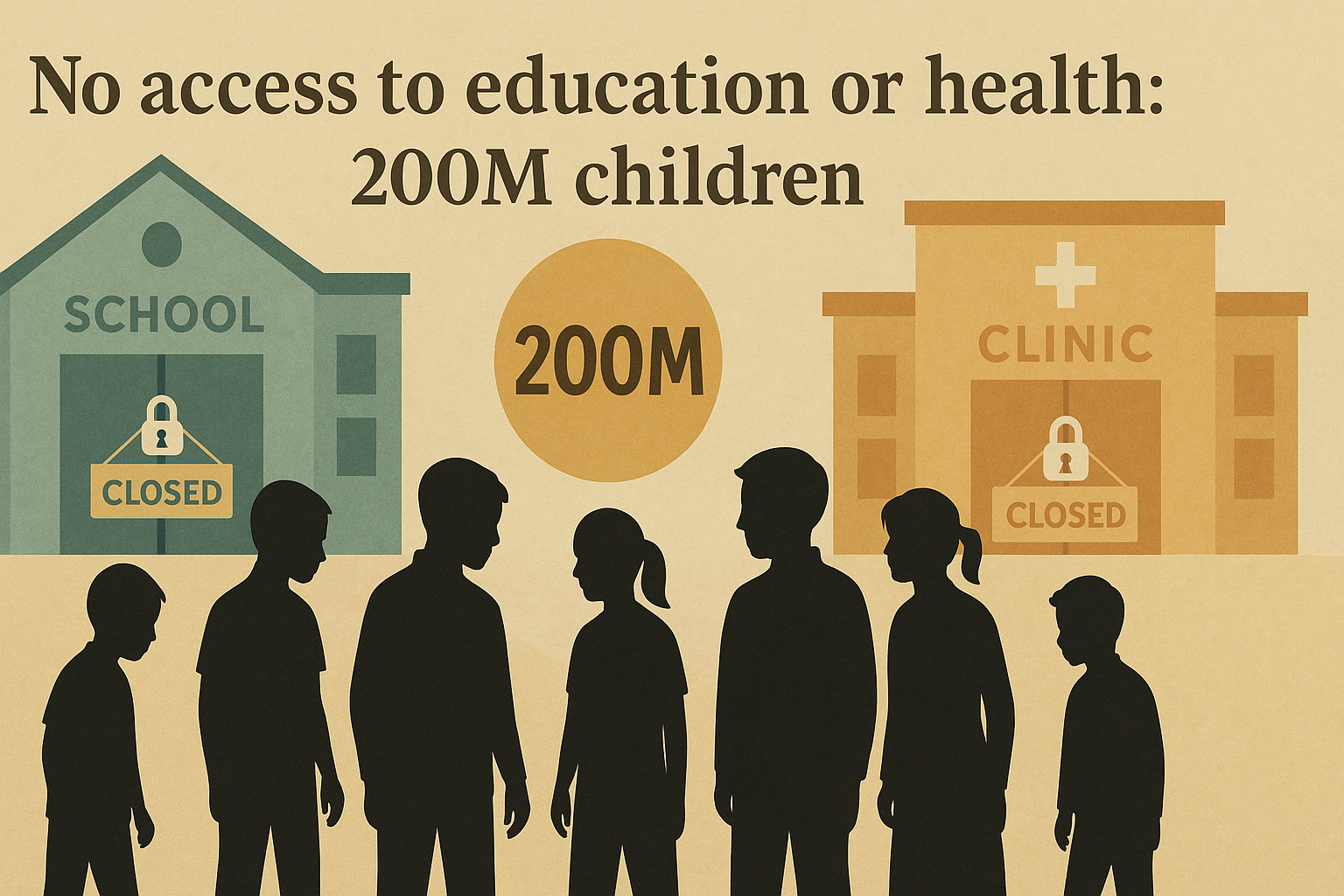No access to education or health for 200 million Indian kids
Morning Standard

1. Introduction and Context
This analysis focuses on UNICEF’s State of the World’s Children 2025 report, revealing that 206 million Indian children lack at least one essential service (health, nutrition, education, water, sanitation, housing), and 62 million face multidimensional deprivation.
Despite strong economic growth and early progress toward several SDGs, India’s child welfare outcomes remain deeply uneven.
This raises core questions about human development, equity, and public investment — themes central to UPSC GS-II & GS-III.
2. Key Arguments Presented
a) Massive deprivation among children
· 206 million children lack one essential service.
· 62 million lack two or more → clear multidimensional deprivation.
b) India’s demographic challenge
· India has one in every five of the world’s children.
· Yet over half still lack basic services despite poverty reduction.
c) Growth but stagnation in child-welfare investment
· Investments in children have plateaued even as India advances on SDGs.
d) Severe inequalities
· Highest deprivation among:
o Infants
o Disabled children
o Crisis-affected children
e) UNICEF’s recommendations
· Strengthen public–private partnerships.
· Expand spending on health, nutrition, education, and safety nets.
3. Author’s Stance
The author argues that:
· Economic progress has not translated into improved child welfare.
· Policy attention and investment remain inadequate given the size of the child population.
· Development must shift from GDP-driven to equity-driven, focusing on vulnerable children.
Tone: Concerned, data-based, reform-oriented.
4. Possible Biases
a) Institutional Bias
· Heavy reliance on UNICEF narrative may overlook:
o Local innovations
o Context-specific achievements
o Recent expansions in government schemes
b) Urban-centric framing
· Emphasis on systemic gaps more than grassroots performance of schemes like:
o Poshan Abhiyaan
o Jal Jeevan Mission
o PM-JAY
o NEP 2020
Still, the article remains balanced and empirically grounded.
5. Structured Analysis
A. Pros (Strengths)
· Strong use of UNICEF data.
· Covers multiple dimensions of deprivation.
· Connects children’s deprivation to long-term national productivity.
· Highlights the urgency for equity-driven development.
B. Cons (Gaps)
· No comparison with other developing nations.
· Limited examination of existing schemes’ effectiveness.
· No state-wise analysis despite wide regional inequality.
· No detailed fiscal analysis post-COVID.
6. Policy Implications
For Government
· Increase budget share for child health & education.
· Strengthen targeting for:
o Disabled children
o Orphans
o Crisis-affected children
· Promote PPPs in nutrition, early learning, and digital access.
· Empower local bodies for service delivery.
For States
· Modernise Anganwadi services.
· Improve foundational literacy and numeracy.
· Strengthen maternal-child health systems.
7. Real-World Impact
If trends continue
· India’s demographic dividend risks turning into a demographic liability.
· Lower adult productivity → lower long-term GDP.
· Higher public spending on health, unemployment, and welfare.
If reforms are implemented
· Stronger human capital formation.
· Reduced malnutrition and learning poverty.
· More inclusive development and progress toward SDGs.
8. UPSC GS Paper Alignment
GS Paper 1
· Child deprivation
· Vulnerable groups
· Demographic challenges
GS Paper 2
· Social justice
· Public health & education
· Role of international bodies (UNICEF)
· Welfare schemes
GS Paper 3
· Human capital
· Poverty & inequality
· Sustainable Development Goals
Essay
Themes:
· Human development
· Equity vs growth
· India’s demographic future
9. Balanced Summary
The article highlights a major gap in India’s development trajectory — economic progress has not ensured comprehensive child well-being.
With 206 million children deprived of essential services and 62 million facing multidimensional deficits, human capital development is at risk.
Although the article effectively raises systemic concerns, it underrepresents recent government efforts and state-level progress. Still, it correctly calls for urgent, child-centric reforms to secure India’s demographic and economic future.
10. Future Perspectives
· Create a National Children’s Development Index.
· Expand early-childhood spending via Finance Commission.
· Build Integrated Child Data Systems.
· Strengthen convergence: health + nutrition + sanitation + education.
· Promote community-led child welfare programs (Kerala model).
· Ensure digital access for poor and remote children.
